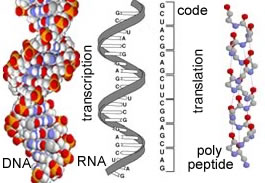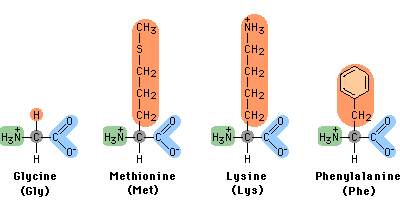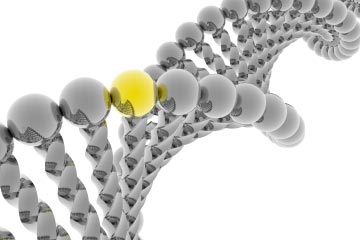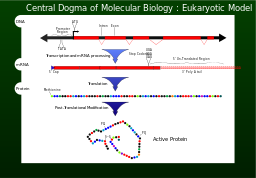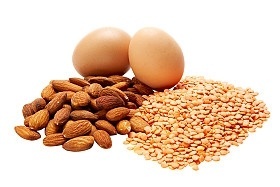How Well Do You Know Proteins?

There is much more to protein than being a class of food. Take this quiz to see how much you know about protein. You'll get your results immediately.
- 1.
Which of the following are large biomolecules, or macromolecules, consisting of one or more long chains of amino acid residues?
- A.
Polysaccharide
- B.
Proteins
- C.
Carbohydrate
- D.
None of the above
Correct Answer
B. ProteinsExplanation
Proteins are large biomolecules made up of one or more long chains of amino acid residues. They are essential for various biological processes in living organisms, such as providing structure to cells, catalyzing chemical reactions, and transporting molecules. Polysaccharides and carbohydrates are also biomolecules, but they do not consist of long chains of amino acid residues like proteins do. Therefore, the correct answer is proteins.Rate this question:
-
- 2.
Which of the following is known as a linear chain of amino acid residues ?
- A.
Amino acids
- B.
Polysacharride
- C.
Polypeptide.
- D.
Monosacharride
Correct Answer
C. Polypeptide.Explanation
A linear chain of amino acid residues is known as a polypeptide. A polypeptide is a polymer consisting of a sequence of amino acids linked together by peptide bonds. It is formed through the process of protein synthesis, where the amino acids are joined together in a specific order determined by the genetic code. Polypeptides can vary in length and can fold into complex three-dimensional structures to form proteins. Amino acids, polysaccharides, and monosaccharides are not specifically referred to as linear chains of amino acid residues, making polypeptide the correct answer.Rate this question:
-
- 3.
The individual amino acid residues are bonded together by _____________and adjacent amino acid residues.
- A.
Amine
- B.
Peptide bonds
- C.
Glycosidic bond
- D.
None of the above
Correct Answer
B. Peptide bondsExplanation
Peptide bonds are the correct answer because they are the bonds that connect individual amino acid residues in a protein chain. These bonds form between the carboxyl group of one amino acid and the amino group of the adjacent amino acid, creating a peptide bond. Amine and glycosidic bonds are not involved in connecting amino acid residues in proteins.Rate this question:
-
- 4.
Most proteins consist of linear polymers built from series of up to _________different L-α-amino acids.
- A.
30
- B.
20
- C.
40
- D.
5
Correct Answer
B. 20Explanation
Proteins are composed of linear polymers made up of different L-α-amino acids. The question asks for the number of different amino acids that make up most proteins. The correct answer is 20, indicating that most proteins are composed of 20 different amino acids. This is because there are 20 standard amino acids commonly found in proteins, each with its own unique properties and functions. Therefore, proteins can have a diverse range of structures and functions due to the various combinations and arrangements of these 20 amino acids.Rate this question:
-
- 5.
What is the name of the type of bond present in the link between amino acids of a polypeptide chain?
- A.
Amino acids
- B.
Polypeptide bonds
- C.
Peptide bonds
- D.
None of the above
Correct Answer
C. Peptide bondsExplanation
Peptide bonds are the type of bond present in the link between amino acids of a polypeptide chain. A peptide bond forms between the carboxyl group of one amino acid and the amino group of another amino acid, resulting in the formation of a peptide chain. This bond is formed through a dehydration synthesis reaction, where a water molecule is released. Peptide bonds play a crucial role in maintaining the structure and function of proteins.Rate this question:
-
- 6.
Which of the following is an end product of protein?
- A.
Laelevulose
- B.
Glucose
- C.
Amino acids
- D.
Glycosidic
Correct Answer
C. Amino acidsExplanation
Amino acids are the building blocks of proteins. When proteins are broken down during digestion or metabolism, they are broken down into individual amino acids. These amino acids can then be used by the body to build new proteins or to produce energy. Therefore, amino acids are the end product of protein.Rate this question:
-
- 7.
Proteins are assembled from amino acids using information encoded in ______________.
- A.
Genes
- B.
Cytoplasm
- C.
Ribosome
- D.
None of the above
Correct Answer
A. GenesExplanation
Proteins are synthesized from amino acids based on the instructions provided by genes. Genes contain the genetic information that is encoded in the DNA molecule. This information is transcribed into messenger RNA (mRNA) which carries the instructions to the ribosomes in the cytoplasm. The ribosomes then read the mRNA and assemble the amino acids in the correct order to form a protein. Therefore, genes play a crucial role in providing the necessary information for the assembly of proteins.Rate this question:
-
- 8.
Which of the following is defined as the process of synthesizing a protein from an mRNA template?
- A.
Interpret
- B.
Translation.
- C.
Transcription
- D.
Dogma
Correct Answer
B. Translation.Explanation
Translation is the correct answer because it refers to the process of synthesizing a protein from an mRNA template. During translation, the mRNA molecule is read by ribosomes, and amino acids are brought in to form a polypeptide chain, which eventually folds into a functional protein. Transcription, on the other hand, is the process of synthesizing mRNA from DNA, while the term "Dogma" does not pertain to the process of protein synthesis.Rate this question:
-
- 9.
The four structures of proteins are Primary, Secondary, Tertiary and _______________ structures
- A.
PreSchool
- B.
Nursery
- C.
Quatenary
- D.
Modern
Correct Answer
C. QuatenaryExplanation
The four structures of proteins are Primary, Secondary, Tertiary, and Quaternary structures. The primary structure refers to the linear sequence of amino acids in a protein. The secondary structure refers to the local folding patterns, such as alpha helices and beta sheets. The tertiary structure refers to the overall three-dimensional shape of the protein. The quaternary structure refers to the arrangement of multiple protein subunits to form a functional protein complex. Therefore, "Quaternary" is the correct answer as it completes the list of protein structures.Rate this question:
-
- 10.
Short proteins can also be synthesized chemically by a family of methods known as _________ synthesis
- A.
Peptide
- B.
Glucose
- C.
Glycosidic
- D.
None of the above
Correct Answer
A. PeptideExplanation
Peptide synthesis refers to the chemical process of creating short proteins. It involves the step-by-step addition of amino acids to form a peptide chain. This method allows for the controlled and precise synthesis of peptides with specific sequences. Therefore, the correct answer is Peptide.Rate this question:
-
Quiz Review Timeline +
Our quizzes are rigorously reviewed, monitored and continuously updated by our expert board to maintain accuracy, relevance, and timeliness.
-
Current Version
-
Mar 21, 2023Quiz Edited by
ProProfs Editorial Team -
Nov 06, 2017Quiz Created by
Jaksiboy
 Back to top
Back to top




